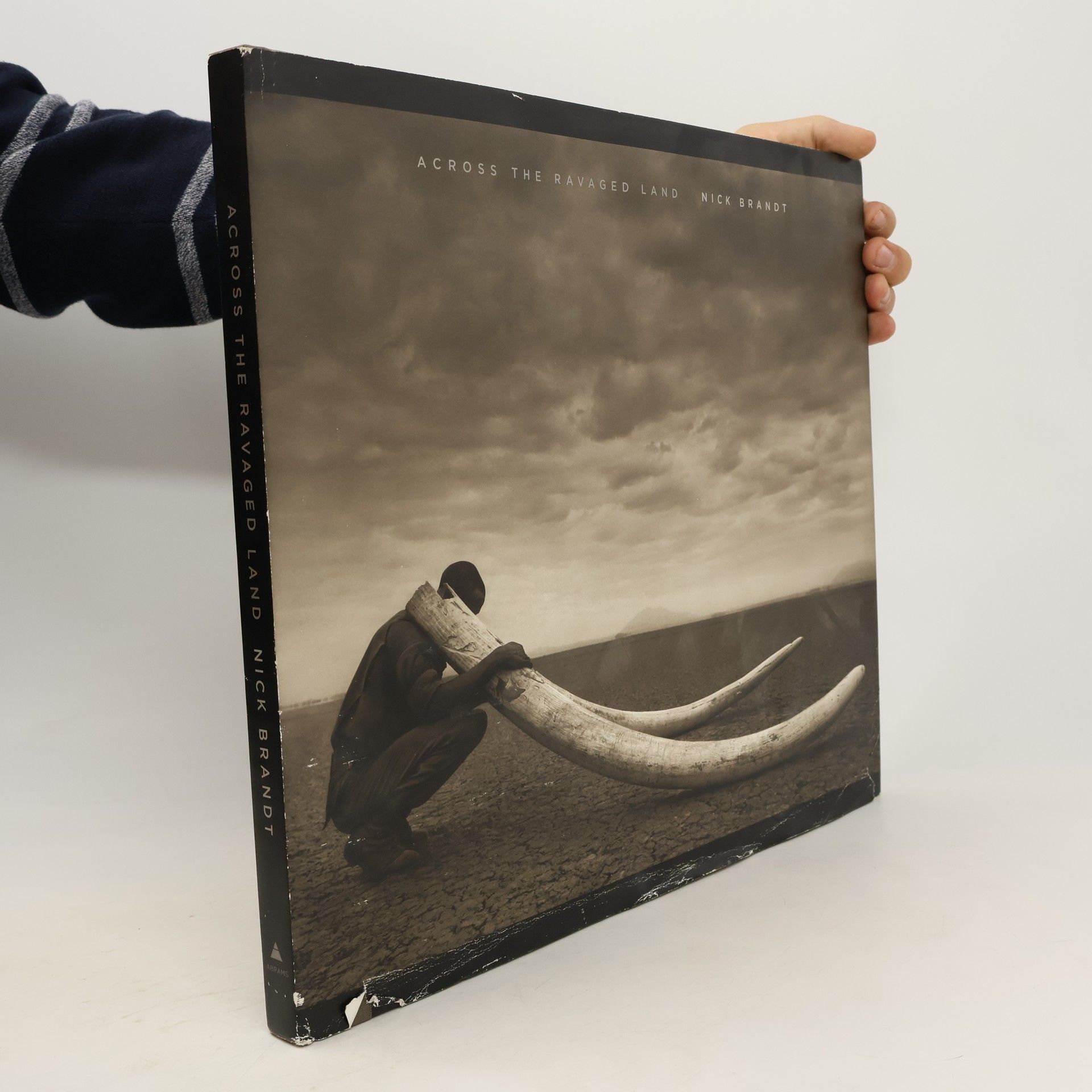A large collection of 57 tritone images depicting the fate of Africa's large animals.
Nick Brandt Books





Across the Ravaged Land is the third and final volume in Nick Brandt’s trilogy of books documenting the disappearing animals of eastern Africa. The book offers a darker vision of this world, still filled with a stunning beauty but now tragically tainted and fast disappearing at the hands of man.In addition to a range of starkly powerful animal portraits, Brandt introduces some new themes, as humans make an appearance for the first time. He also contributes two essays summing up his photographic odyssey, which has taken more than a decade of intensive work to complete.
Nick Brandt depicts the animals of East Africa with an intimacy and artistry unmatched by other photographers who choose wildlife as their subject. He creates these majestic sepia and blue-tone photos contrasting moments of quintessential stillness with bursts of dramatic action by engaging with these creatures on an exceptionally intimate level, without the customary use of a telephoto lens. Evocative of classical art, from dignified portraits to sweeping natural tableaux, Brandt's images artfully and simply capture animals in their natural states of being. With a foreword by Alice Sebold and an introduction by Jane Goodall, On This Earth is a gorgeous portfolio of some of the last wild animals and a heartfelt elegy to a vanishing world.
Nick Brandt’s ongoing global series captures the essence of both humans and animals, all embodying a profound sense of personhood. The subjects, photographed at Senda Verde wildlife sanctuary in Bolivia, reflect the struggles of adapting to a changing world. Each has faced their own tragedies, with extreme droughts and floods ravaging homes and livelihoods. The animals, victims of habitat destruction and trafficking, are rescues unable to return to the wild. Brandt’s images present people and animals together, highlighting their interconnectedness through shared experiences. Fog serves as a unifying visual element, symbolizing the natural world’s rapid decline and echoing the smoke from climate change-induced wildfires. Despite their losses, these individuals and creatures emerge as survivors, navigating a new reality. The series shares their compelling stories. Brandt, born in 1964 in London, studied painting and film at St. Martin’s School of Art. After moving to California in 1992, he has documented humanity’s destructive impact on nature and its repercussions on people. The first chapter of this series was photographed in Zimbabwe and Kenya in late 2020, while Chapter Two, taken in Bolivia in 2022, marks his first work outside Africa in two decades.
Die majestätischen Schwarzweißbilder von Nick Brandt rauben dem Betrachter in ihrer einzigartigen Monumentalität fast den Atem. Sie sind das Ergebnis einer ausgeklügelten Technik des Ausnahmefotografen, der sich mit einer analogen Mittelformatkamera Pentax 67 ohne Teleobjektiv bis auf wenige Meter an seine Objekte heranpirscht. Geduldig wartet er bis zu mehreren Stunden, um die Tiere in teils fast unwirklich erscheinenden Inszenierungen auf seinen Film zu bannen. Mit minimalen Bearbeitungen der Hintergründe in den Negativ-Scans schafft er abschließend die besondere atmosphärische Wirkung seiner idyllisch-romantischen Bilder, die den Betrachter so magisch anzieht.